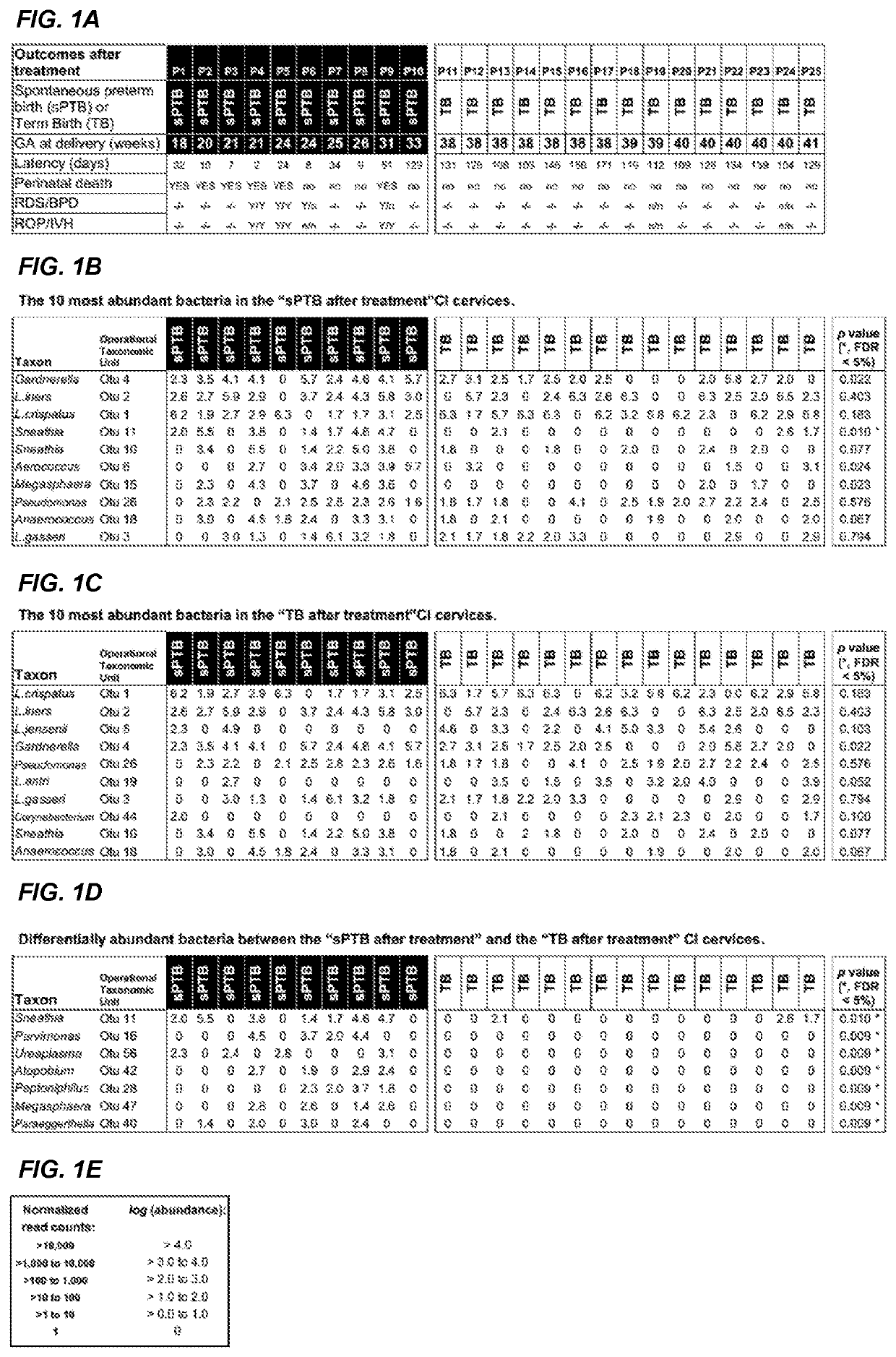Detecting bacterial taxa for predicting adverse pregnancy outcomes
a technology of predicting adverse pregnancy outcomes and bacterial taxa, which is applied in the direction of microbiological testing/measurement, dna/rna fragmentation, biochemistry apparatus and processes, etc., can solve the problems of low to moderate sensitivity, limited data on those taxa, and neonatal mortality and morbidity. , to achieve the effect of improving stability
- Summary
- Abstract
- Description
- Claims
- Application Information
AI Technical Summary
Benefits of technology
Problems solved by technology
Method used
Image
Examples
example 1
ially Abundant Bacterial Taxa in the Cervix of Women with Pregnancy-Associated Complications
Background
[0117]To support the cervix in an attempt to prolong pregnancy of women with advanced cervical dilation or premature cervical shortening, the clinicians may place a cerclage (Owen, Hankins et al. 2009) or a cervical pessary. However, it was shown that women with infection, such as intra-amniotic infection, despite placement of cerclage, were associated with adverse pregnancy outcomes, including pregnancy loss, preterm birth, rupture of membrane (Romero, Gonzalez et al., 1992). Specifically, among 33 women with cervical dilation > or =2 cm, intact membrane, and without active labor between 14 and 24 weeks of gestation, 17 (51.5%) were found to have microbial invasion of the amniotic cavity. All patients with microbial invasion of the amniotic cavity had complications. Patients who underwent cervical cerclage in the presence of a positive amniotic fluid culture had rupture of membrane...
example 2
Microbiome Signature for the Identification of Cervical Insufficiency Patients Resulting in Spontaneous Preterm Birth after Clinical Intervention
[0154]Bacterial taxa colonizing the cervices of cervical insufficiency (CI) patients responding differently to clinical intervention (cerclage / pessary) have not been systematically investigated. Using massively parallel sequencing, we interrogated the abundances of over 9,600 taxa per cervical swab sample obtained before intervention from serially-recruited singleton-pregnancy CI patients and appropriately-matched women without CI. We observed that the cervical microbiomes were altered in the CI patients, compared with those of the non-CI controls. Notably, we identified 6 differentially abundant taxa in patients resulting in “spontaneous preterm birth (10 (total abundance of these 6 taxa), LA6, >1.15 to define a positive result, we correctly classified all but one patients resulting in “sPTB after intervention” (9 / 10=90%), with no false po...
PUM
| Property | Measurement | Unit |
|---|---|---|
| Tm | aaaaa | aaaaa |
| cervical length | aaaaa | aaaaa |
| time | aaaaa | aaaaa |
Abstract
Description
Claims
Application Information
 Login to View More
Login to View More - R&D
- Intellectual Property
- Life Sciences
- Materials
- Tech Scout
- Unparalleled Data Quality
- Higher Quality Content
- 60% Fewer Hallucinations
Browse by: Latest US Patents, China's latest patents, Technical Efficacy Thesaurus, Application Domain, Technology Topic, Popular Technical Reports.
© 2025 PatSnap. All rights reserved.Legal|Privacy policy|Modern Slavery Act Transparency Statement|Sitemap|About US| Contact US: help@patsnap.com


